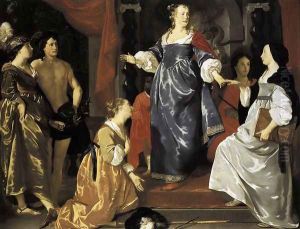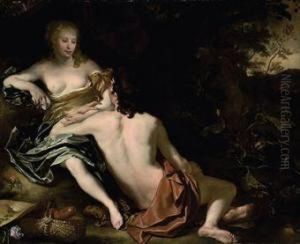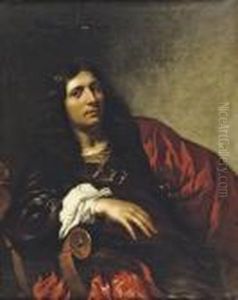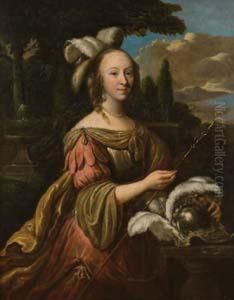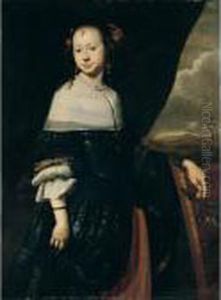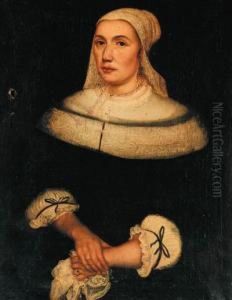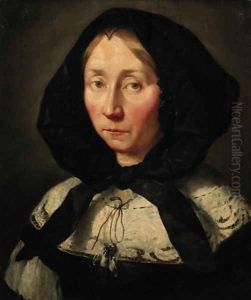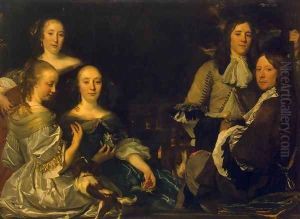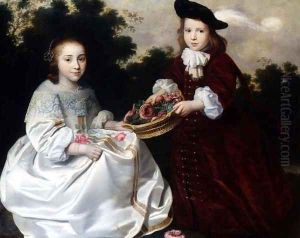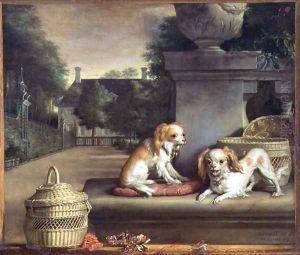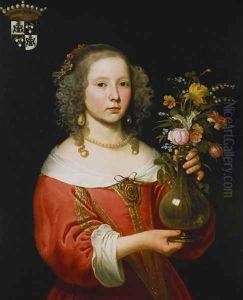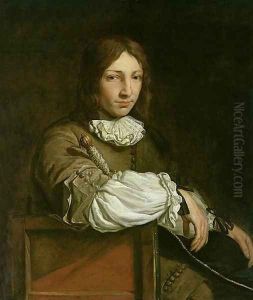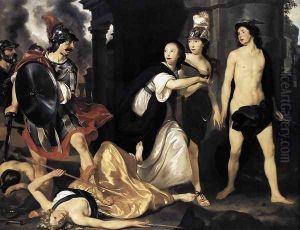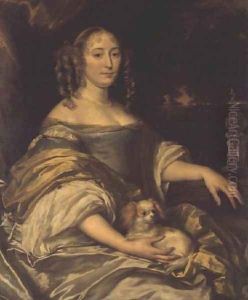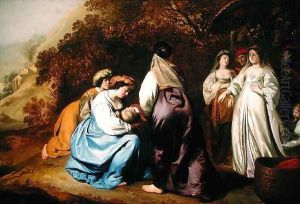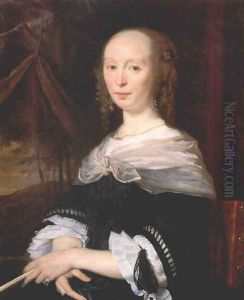Abraham van den Tempel Paintings
Abraham van den Tempel, born in Leeuwarden, the Netherlands, in 1622, was a prominent Dutch Golden Age painter known for his portraits and religious scenes. His work is characterized by its delicate handling of light and composition, reflecting the artistic achievements of his era. Van den Tempel initially trained under his father, Lambert Jacobsz, who was also a painter, thereby embedding himself in the artistic traditions from an early age.
After his initial training, van den Tempel moved to Amsterdam, where he further developed his skills and established himself as a successful artist. He became particularly renowned for his ability to capture the likeness and personality of his sitters, making him a sought-after portraitist among the Dutch elite. His portraits are notable for their elegance, detailed rendering, and the sophisticated use of lighting, which often highlights the intricate details of the subjects' attire and surroundings.
Beyond portraiture, Abraham van den Tempel also explored biblical and mythological themes, infusing them with a sense of realism and emotional depth. His religious scenes are appreciated for their thoughtful compositions and the way they convey the narratives with both respect and innovation.
In 1652, van den Tempel moved to Leiden, where he became a member of the local Guild of St. Luke, an association of artists. His time in Leiden was marked by continued success, and he took on several students, thereby influencing the next generation of Dutch painters. Among his contributions to the art world was his role in the development of the Leiden School of painting, which emphasized fine detail, bright colors, and a high degree of finish.
Abraham van den Tempel's legacy is that of a master portraitist and an important figure in the Dutch Golden Age of painting. His works are preserved in major museums around the world, where they continue to be admired for their beauty and technical proficiency. He passed away in Amsterdam in 1672, leaving behind a body of work that remains influential in the study of 17th-century Dutch art.
